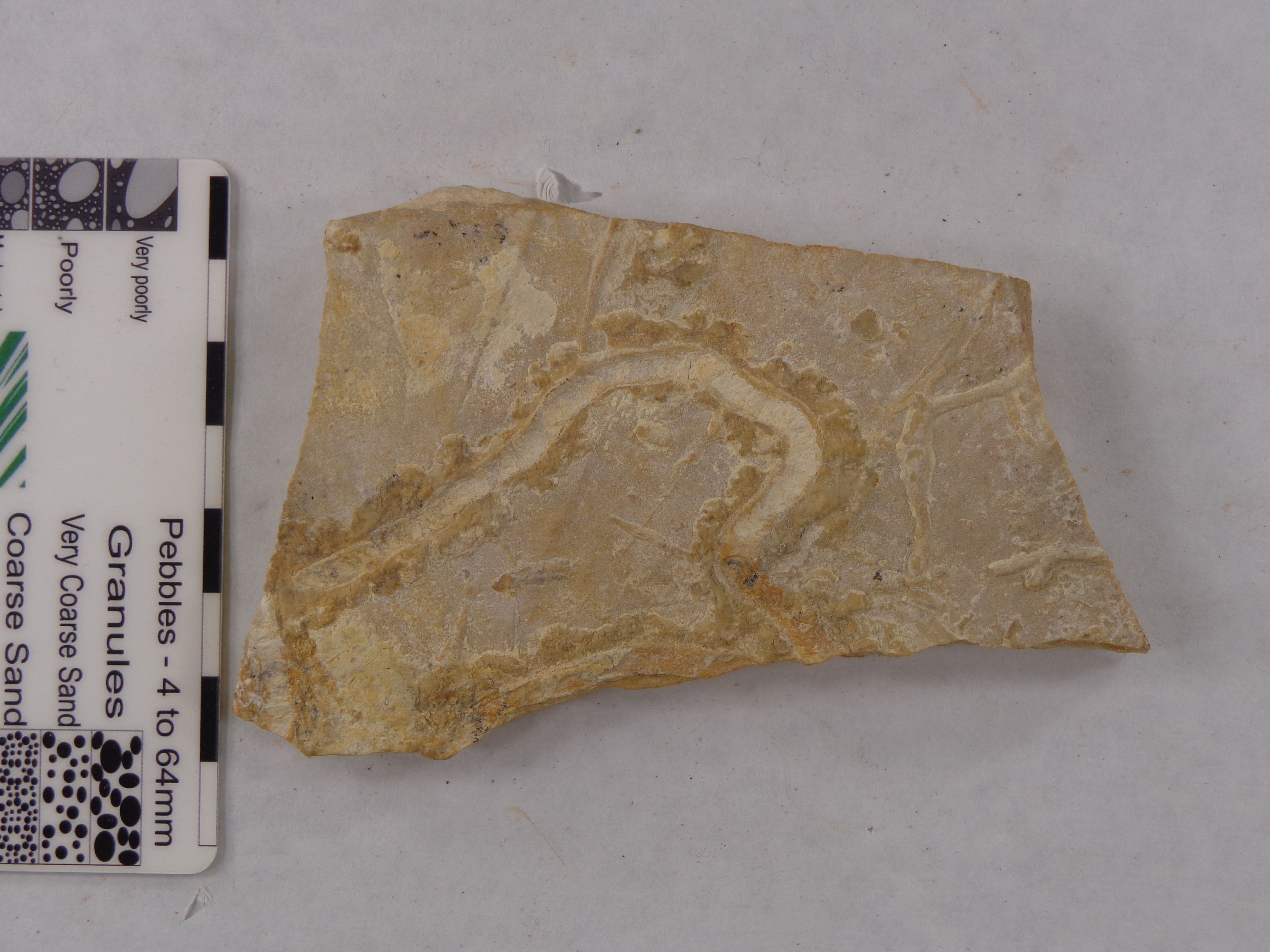Nereites MacLeay, 1839
DESCRIPTION: A meandering trace consisting of a central furrow flanked on both sides by regular closely spaced oval or circular lobes, closely spaced, commonly finely striated. Meanders may be densely space and vary in width, shape, and size.
BEHAVIOR(S): Feeding or grazing trace of a deposit-feeding animal.
ENVIRONMENTAL SETTINGS: Marine, deep marine to lagoonal to deltaic environments. Commonly found on the top surface of thin turbidites in near abyssal plain areas (slope/abyssal) in sand and mud-based media. Reported in lacustrine turbidites (Hu et al., 1998).
POSSIBLE TRACEMAKERS: Annelid worms, gastropods, or arthropods.
GEOLOGIC RANGE: Cambrian-recent.
ADDITIONAL REFERENCES: (Seilacher, 1983, 1986)(Devera, 1989)(Rindsberg, 1994)(Uchman, 1995)(Orr, 1995)(Mangano et al., 2000).
REMARKS: Possible preservational variant with Neonereites Seilacher, 1960 and Scalarituba Weller, 1899 with Neonereites and Scalarituba as junior synonyms.
